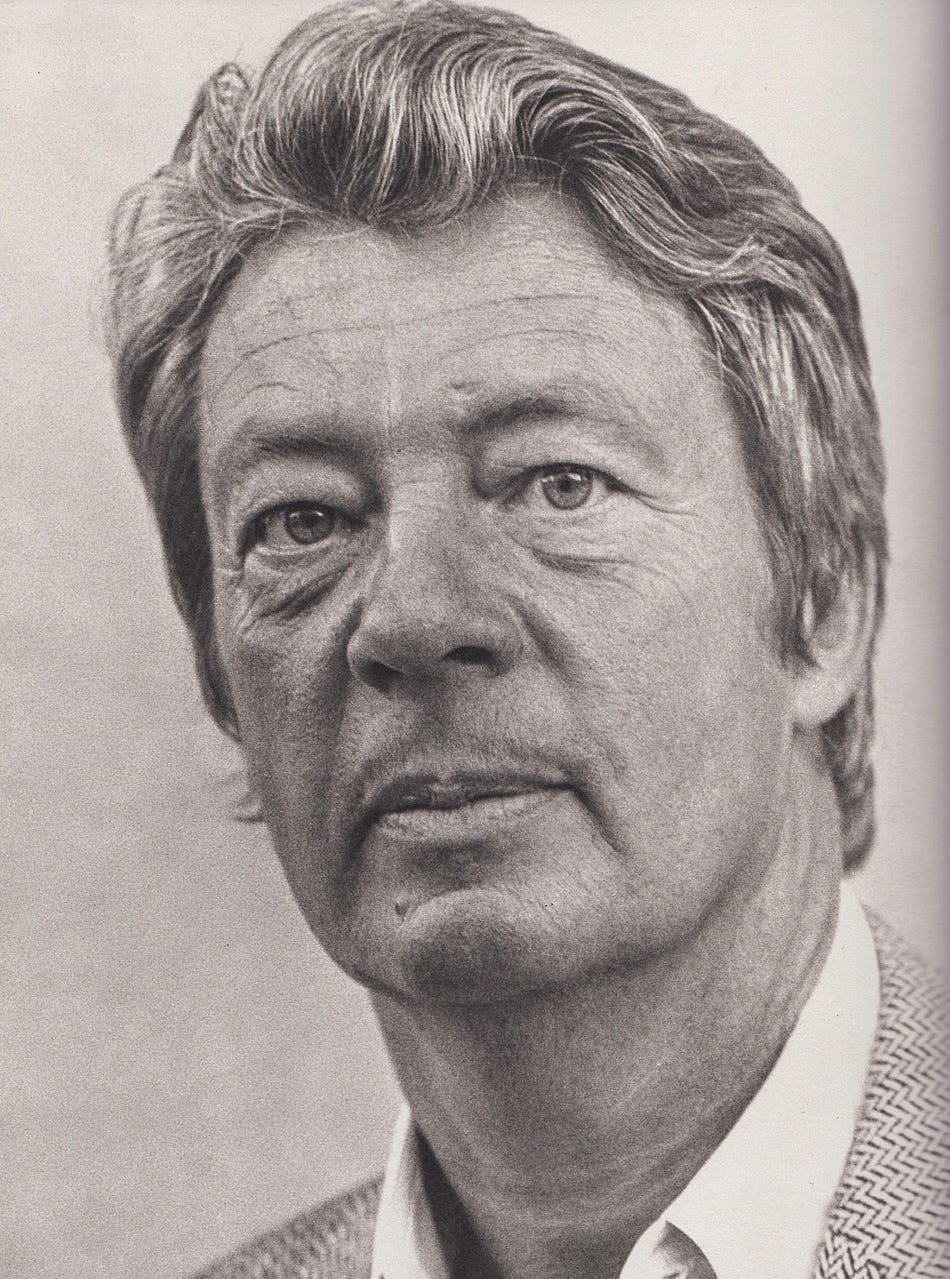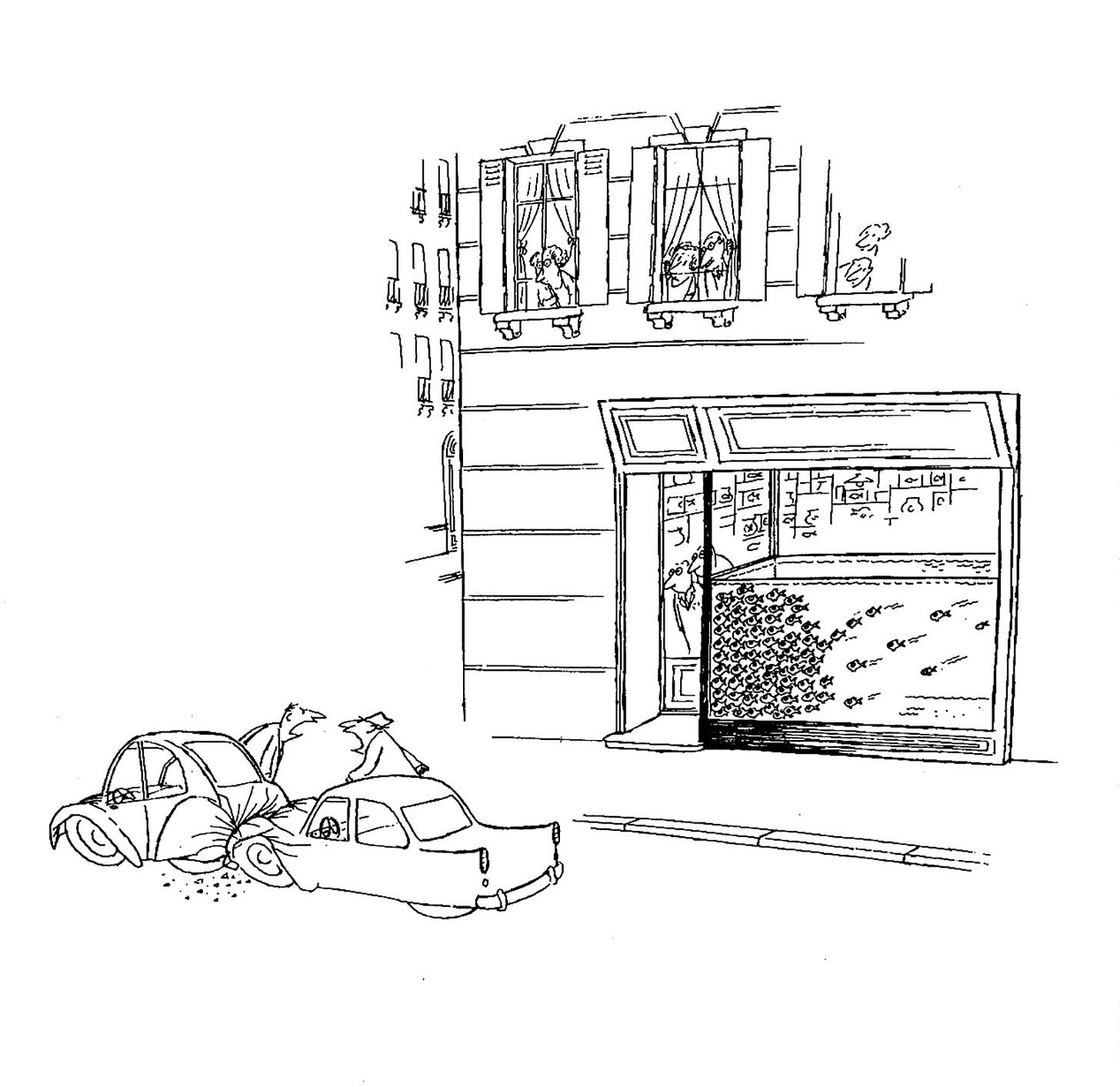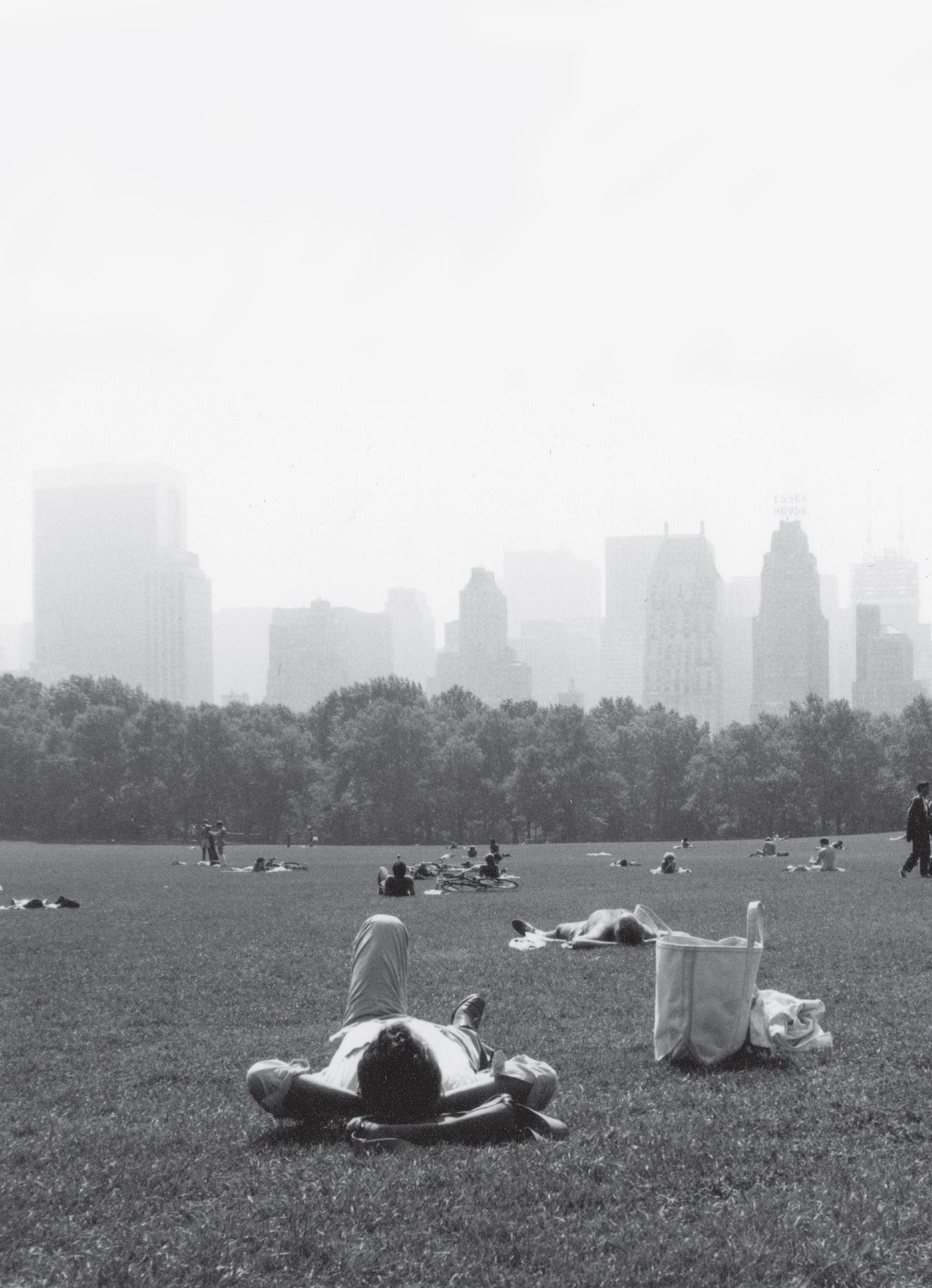Art Dogs is a monthly dispatch introducing the pets—dogs, yes!, but also cats, turtles, marmosets, and more—that were kept by our favorite artists. Subscribe to receive these posts in your email inbox.

Jean-Jacques Sempé is France’s most celebrated cartoonist. He has even been called a national institution. In his lifetime, he published 40 books, which were translated into 40 languages and sold 15 million copies. Sempé, as he is affectionately called, also drew 114 covers for The New Yorker.1
Sempé never attended art school but spent more than 70 years drawing. In his obituary, the New York Times described him as having “bypassed life’s meanspirited realities for a mythical world of mischievous schoolboys, daydreamers, nosy neighbors, holidaymakers and swooning lovers.”
Sempé portrayed characters struggling with “petty tragedies or undeserved victories” and delighted in “the tenacity of the most banal of human instincts.”2
He also mastered the panoramic cartoon, often drawing people from a high or distant viewpoint. “I've always been astonished that we humans assume somehow that we are big,” he once said. “If you look at a person beside a tree or a building or a town, we are just tiny, little scraps of things. I never consciously set out to draw that way.”3
Those aesthetic tendencies, combined with French eyes, made him a magnificent documenter of life in New York City. Despite only visiting New York City “five or six” times in his life, Sempé captured its spirit perfectly in his cartoons. In the late 1970s, Sempé fulfilled a life-long dream to draw a cover for the New Yorker. His final cover for the magazine went to publication three weeks after his death in August of 2022.
Sempé’s scenes of New York and Paris are what draw me back to him most. I just spent 24 hours in Paris to celebrate my 37th birthday. After seeing the two tremendous cities in juxtaposition, it’s clear somehow that a Frenchman in New York would be the person to notice these moments—scenes that I would stride right past unthinkingly.
“In the beginning I felt much more alone in Paris than in New York. The weight of the French bourgeoisie weighs very heavily, and makes it hard to enter into Parisian society. Here it’s very different. In Paris I always felt guilty looking for work, but here people understand that that’s just part of life.” — Sempé
“I’m passionately attached to the city. I try to find it by drawing it. I love the colors in New York. They’re dynamic: bright yellows, greens, reds, and blues. Paris, where I live, is beautiful but it’s always gray. I love Paris too, but it’s not the same.” — Sempé
“For me, the modern world lacks charm. I am not saying that things were always better in the past. They weren’t. But things looked better, or at least more interesting, to me.” — Sempé
Philosopher Henri Bergson once wrote:
[A]rt always aims at what is individual. What the artist fixes on his canvas is something he has seen at a certain spot, on a certain day, at a certain hour, with a colouring that will never be seen again. What the poet sings of is a certain mood which was his, and his alone, and which will never return. What the dramatist unfolds before us is the life-history of a soul, a living tissue of feelings and events — something, in short, which has once happened and can never be repeated. We may, indeed, give general names to these feelings, but they cannot be the same thing in another soul. They are individualized.
Truly great art embodies this paradox: that very specific, very individual expressions can offer near-universal appeal. For me, Sempé was a master of this capacity.
In addition to documenting the charms and oddities of life in Paris and New York, Sempé's repeat subjects included bikes, children, trees, cats, dogs and musicians.
His own cat, Nefertiti, and his wife’s Jack Russell terrier, appear regularly in his work.

A critic once wrote that Sempé:
Took pleasure in giving an answer to the famous mystery that surrounds the lives of our animals in our absence. The cartoonist lends them almost human behavior, humorous reflections of our ways of being. Thus, the cat, tired of the frantic pace of a city he only knows through the window, seems happy to find ‘his’ bed.
The dogs and cats in Sempé’s work serve to emphasize the qualities of a well-lived human life—enchantment, relaxation, adventure, play and comedy. The animals are the wise ones who have much to show us, should we allow them to do so.
https://www.newyorker.com/culture/cover-story/cover-story-2022-09-05
https://www.independent.co.uk/news/people/profiles/jeanjacques-semp-eacute-luck-of-the-draw-5330966.html
https://www.independent.co.uk/news/people/profiles/jeanjacques-semp-eacute-luck-of-the-draw-5330966.html




























![Semp%C3%A9-central-park[1] | Illustration, Vintage illustration art, Drawing illustrations Semp%C3%A9-central-park[1] | Illustration, Vintage illustration art, Drawing illustrations](https://substackcdn.com/image/fetch/$s_!G4n-!,w_1456,c_limit,f_auto,q_auto:good,fl_progressive:steep/https%3A%2F%2Fsubstack-post-media.s3.amazonaws.com%2Fpublic%2Fimages%2Fc3e21070-fb44-457e-af6c-3d4280c77eb1_569x787.jpeg)






Thank you. Beautiful essay. Perfect. You've made my week. Month.
My kids and I loved the Nicholas books. Never thought to look at his other work, so great! Thanks for sharing it.